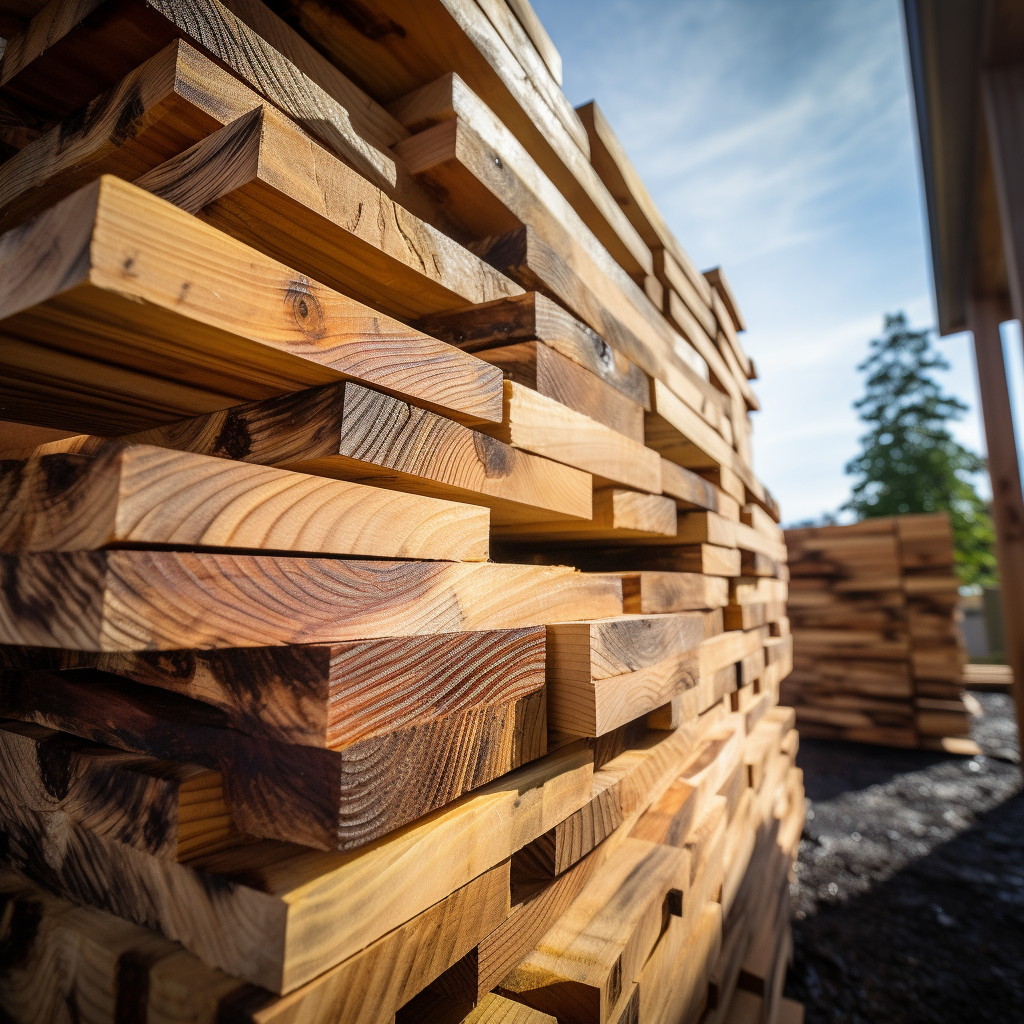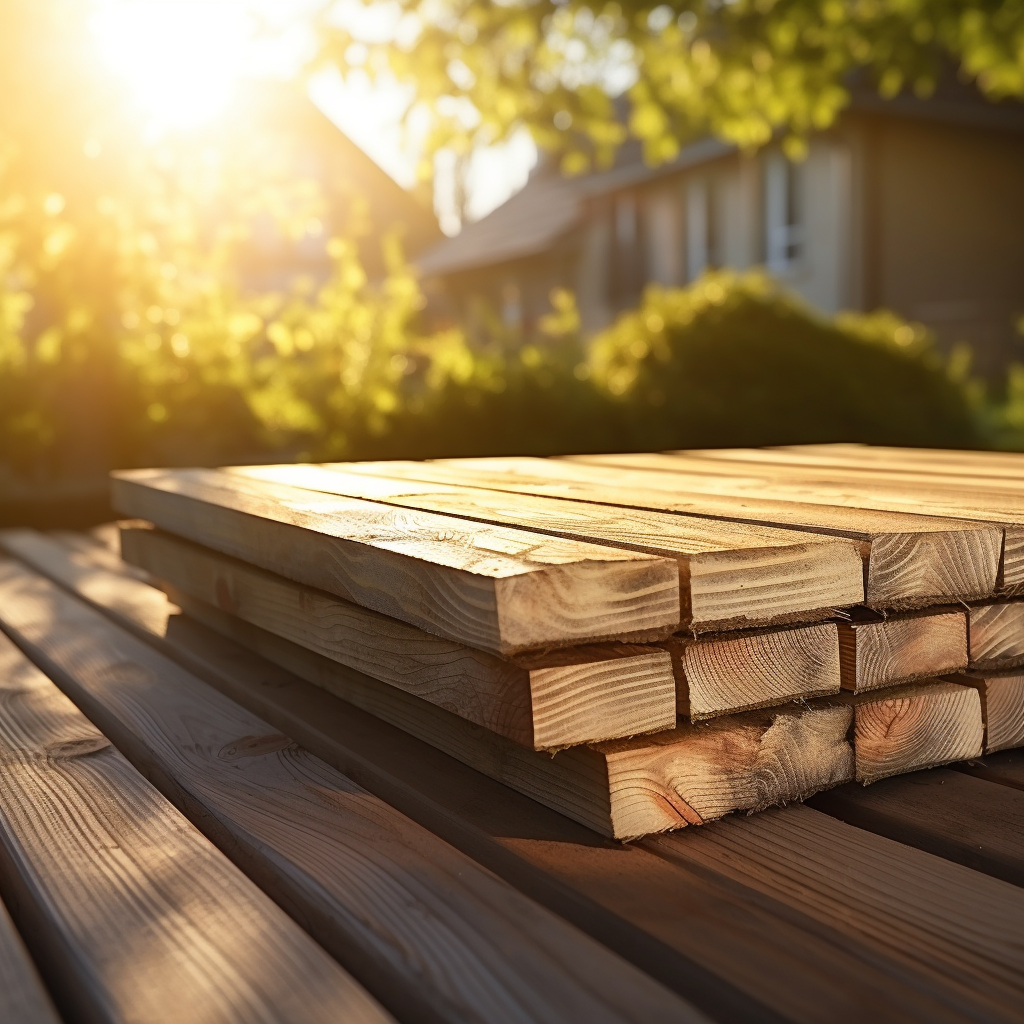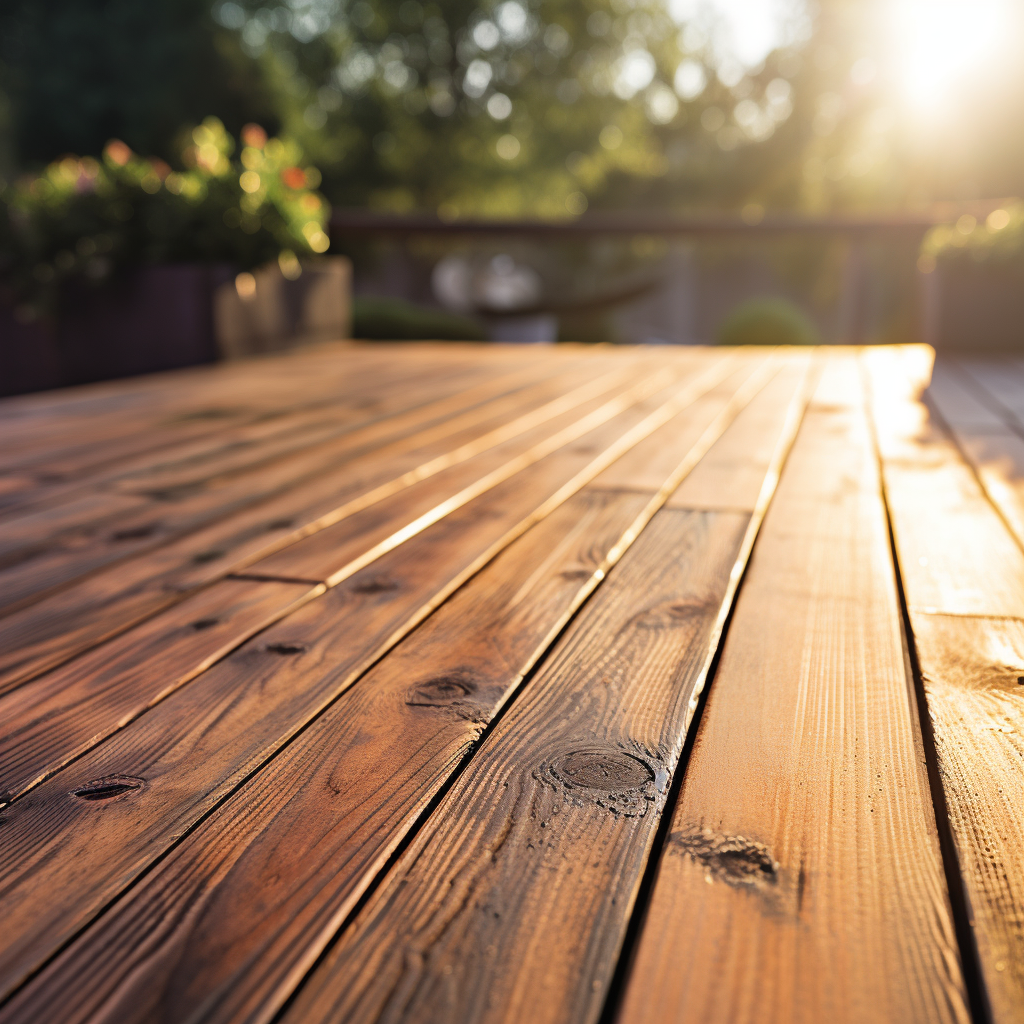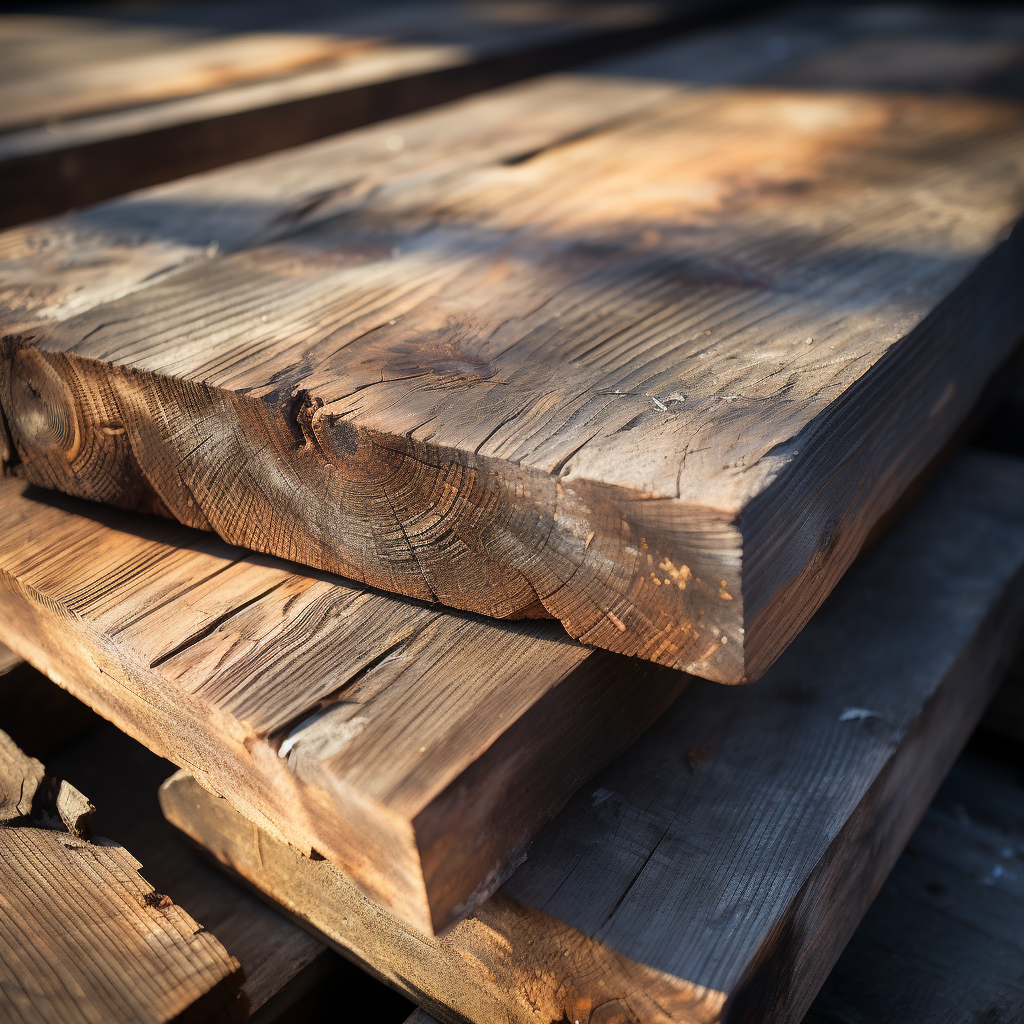Wondering how long it’ll take for your pressure treated wood to dry? We’ve got you covered!
In this article, we’ll explore the factors that affect drying time, provide typical drying times for pressure treated wood, and even offer tips on how to speed up the process.
Plus, we’ll share signs that indicate your wood is dry and best practices for working with it.
Get ready to tackle that project with confidence!
Key Takeaways
- Temperature and humidity are key factors that affect the drying time of pressure treated wood.
- Pressure treated wood typically takes a few weeks to dry, as the chemical treatment requires time to release excess moisture.
- Proper ventilation and air circulation, such as using fans or dehumidifiers, can accelerate the drying process.
- Signs that pressure treated wood is dry include a lack of dampness, absence of visible water droplets or wet spots, lighter color, and a hollow sound when tapped.
Factors Affecting Drying Time

Factors like temperature and humidity will affect how long pressure treated wood takes to dry. Higher temperatures will speed up the drying process, while cooler climates may take several months for the wood to fully dry. In humid environments, the moisture in the air slows down the drying process. Therefore, it’s important to consider the local climate when determining the drying time for pressure treated wood.
Additionally, the size and thickness of the wood will also impact the drying time. Thicker pieces of wood will take longer to dry compared to thinner ones.
Typical Drying Times for Pressure Treated Wood

You can expect pressure treated wood to take a few weeks to fully dry. After being treated with chemicals to protect against rot and insects, the wood needs time to release excess moisture.
During this drying period, it’s important to allow proper ventilation to aid in the evaporation process. Factors such as humidity, temperature, and the size and thickness of the wood can affect the drying time. In warmer and drier climates, the wood may dry more quickly, while in colder and more humid environments, it may take longer.
It’s essential to be patient and not rush the process, as using the wood before it’s fully dry can lead to warping or other issues. Regularly check the moisture content with a moisture meter to determine when the wood is ready for use.
How to Accelerate the Drying Process
If you’re looking to speed up the drying process of pressure treated wood, using a fan or dehumidifier can help remove excess moisture.
Air circulation is key in drying the wood faster. Place a fan near the wood or set it up to blow directly on it. This will help evaporate the moisture and reduce the drying time.
Similarly, a dehumidifier can also be effective in removing moisture from the air, which in turn accelerates the drying process. Make sure to set the dehumidifier to a low humidity level and position it near the wood.
Remember to check the progress regularly and adjust the settings if needed.
Signs That Your Pressure Treated Wood Is Dry
Once the moisture content in the wood has reached a certain level, it won’t feel damp to the touch anymore.
So, how can you tell if your pressure treated wood is dry? Well, there are a few signs to look out for.
Firstly, check for any visible water droplets or wet spots on the surface of the wood. If you don’t see any, that’s a good indication that the wood is dry.
Secondly, take a closer look at the color of the wood. If it appears lighter or less saturated compared to when it was wet, that’s another sign that it has dried out.
Lastly, give it a gentle tap. If you hear a hollow sound, it means the moisture has evaporated and the wood is ready for use.
Best Practices for Working With Dry Pressure Treated Wood

To work effectively with dry pressure treated wood, ensure that you follow the best practices. Here are three important guidelines to keep in mind:
- Use the right tools: Make sure you’ve the appropriate tools for the job, such as a saw with carbide-tipped blades or stainless steel fasteners. These tools are designed to handle the density and hardness of dry pressure treated wood, ensuring clean and precise cuts.
- Wear protective gear: Safety should always be a priority. When working with dry pressure treated wood, wear safety goggles, gloves, and a dust mask to protect yourself from flying debris and harmful chemicals that might be present in the wood.
- Pre-drill holes: Dry pressure treated wood can be prone to splitting or cracking when fasteners are driven directly into it. To prevent this, it’s recommended to pre-drill holes before inserting screws or nails. This will help to minimize the risk of damaging the wood and ensure a secure and long-lasting connection.
Frequently Asked Questions
Q: How long does it take for pressure-treated wood to dry?
A: The drying time for pressure-treated wood depends on several factors, such as the type of wood, climate conditions, and drying method. On average, it can take anywhere from a few days to several weeks for the wood to dry completely.
Q: Can I stain or paint pressure-treated wood before it is dry?
A: It is recommended to allow the pressure-treated wood to dry sufficiently before applying any stain or paint. Moisture in the wood can prevent the stain or paint from adhering properly and may result in an uneven finish.
Q: How can I determine if pressure-treated wood is dry enough to stain or paint?
A: One way to determine if the wood is dry enough is by performing a moisture test. You can use a digital moisture meter to measure the moisture content of the wood. Typically, a reading of around 15% or less is considered dry enough for staining or painting.
Q: Can I build with wet pressure-treated wood?
A: It is not recommended to build with wet pressure-treated wood as it can lead to warping and other issues. It is best to allow the wood to dry properly before using it for construction.
Q: What happens if you stain or paint pressure-treated wood too soon?
A: If you stain or paint pressure-treated wood before it is dry enough, the moisture trapped in the wood can cause the stain or paint to bubble, crack, or peel. It is important to allow the wood to dry completely to ensure a successful finish.
Q: How long should I let pressure-treated wood dry before using it?
A: The recommended drying time for pressure-treated wood varies, but it is generally advised to let the wood dry for at least 48 hours to a few weeks, depending on the drying conditions. It is always a good idea to check the moisture content of the wood before using it.
Q: Can I paint pressure-treated wood?
A: Yes, you can paint pressure-treated wood. However, it is important to allow the wood to dry properly before applying paint. Additionally, it is recommended to prime the wood before painting to ensure proper adhesion and a long-lasting finish.
Q: Can pressure-treated wood shrink as it dries?
A: Yes, pressure-treated wood can shrink as it dries. This shrinkage is natural and occurs as the wood loses moisture. To minimize potential shrinkage, it is important to let the wood dry evenly and avoid abrupt changes in humidity.
Q: What is the difference between kiln-dried wood and air-dry wood?
A: Kiln-dried wood is dried in a controlled environment, such as a kiln, to reduce its moisture content. This process helps to speed up the drying time and ensure that the wood is dry enough for use. Air-dry wood, on the other hand, is left to dry naturally in open air over an extended period of time.
Q: How can I dry pressure-treated wood without warping?
A: To minimize the risk of warping, it is important to stack the pressure-treated wood in a way that allows air circulation. This can be achieved by using spacers between the boards and ensuring they are stored in a well-ventilated area. Additionally, it is important to let the wood dry slowly and evenly.

Leave a Reply